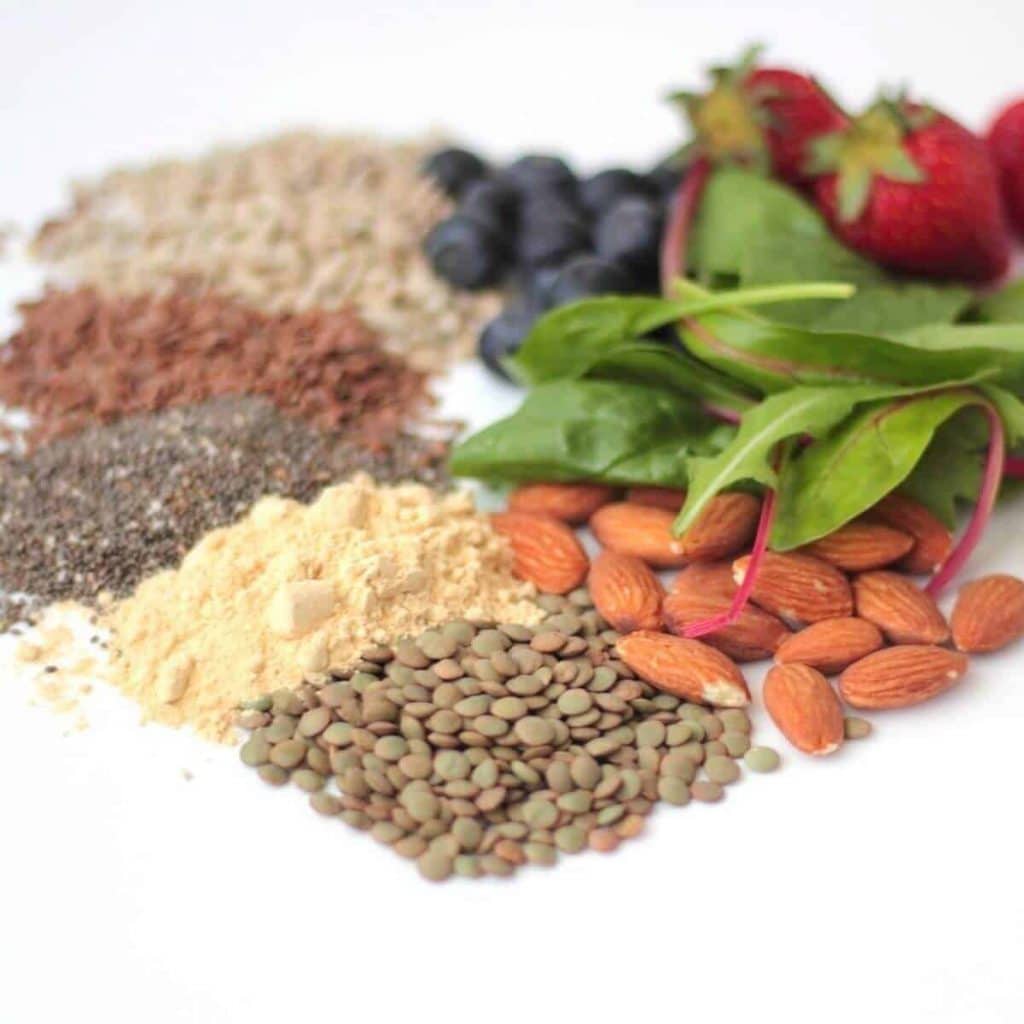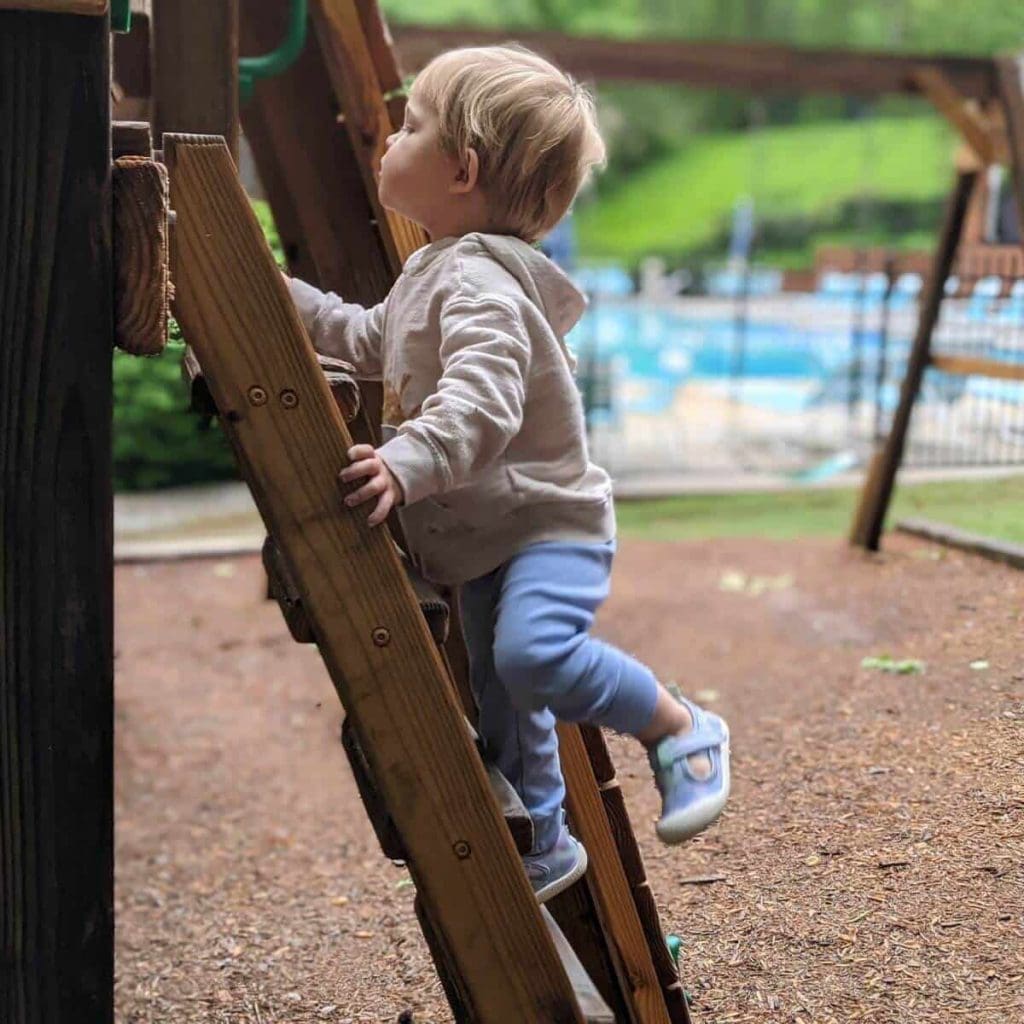A constipated toddler requires some of the most stressful tasks of parenting small children: getting them to eat, cleaning bodily fluids, and potty training. We know that if you’re googling “constipation in toddlers remedies” at 10 o’clock after your exhausted and uncomfortable child finally fell asleep, you need answers pronto!
We hear you, my friend!
In this article, you’ll find the safe, effective home treatments for constipation in toddlers you’re looking for without the fluff.
Are you ready for the straight poop on constipation?
(My only poop joke, I swear!)

This site contains affiliate links, meaning that we earn a small commission for purchases made through our site. We only recommend products we personally use, love, or have thoroughly vetted.
- How Do I Know My Toddler Is Having Constipation?
- Fiber-Rich Foods: Natural Constipation in Toddlers Remedies
- Staying Hydrated: Natural Constipation in Toddlers Remedies
- Strike a (Yoga) Pose: Natural Constipation in Toddlers Remedies
- Tummy Massage: Natural Constipation in Toddlers Remedies
- Potty Training Challenges: Natural Constipation in Toddlers Remedies
How Do I Know My Toddler Is Having Constipation?
If your child is experiencing constipation, know that it’s one of the most common conditions seen by pediatricians.
The symptoms of constipation in toddlers can vary depending on severity, but here are some common signs:
- Cannot pass a stool
- Refusing to pass stool
- Pain and distress when passing a stool
- Passing stools infrequently (pooping every 3 or more days)
- Having regular accidents involving stool after day and night potty training
You may also notice stomach pain, fresh blood in your child’s stool, swelling in the abdomen, and loss of appetite.
Constipation does not warrant an immediate call to your physician if your child has no additional health complications.
If your child is having constipation lasting longer than 2 weeks or you have concerns about your child’s symptoms, give your pediatrician a call.
Your child’s doctor may consider ruling out food allergies or sensitivities if it is an ongoing problem.
Fiber-Rich Foods: Natural Constipation in Toddlers Remedies
Fiber is without a doubt one of the most important elements in a healthy, balanced diet, but its association with all things poop gives fiber a bad reputation.
Maintaining healthy levels of fiber can help relieve and prevent constipation naturally.
The American Academy of Nutrition and Dietetics recommends around 14 grams of fiber per 1,000 calories, and the typical 2-3 year old consumes about 1,000 calories per day.
Based on this, we should shoot for a toddler diet that includes around 14 grams of fiber each day.
I know what you might be thinking. When the average American adult is only consuming 10-15 grams of fiber this can seem like a lot of fiber to cram into a little body.
But by adding a couple of higher quality, plant-based foods, this goal is easily met!
Toddler-Friendly Fiber-full Foods
Fiber comes from plants, so offering plant-based foods that are high in fiber can ensure your toddler is pooping like a champ.
If high-fiber foods are new to your toddler, introduce them one by one over time to avoid making your their constipation worse.
Here are some of my favorite high-fiber foods for toddlers:
- Avocado (10 g)
- Raspberries (8 g per cup) or Blueberries (3.5 g per cup)
- Black Beans (10 g per cup)
- Lentils (15 g per cup)
- Rolled Oats (20 g per cup)
- Dried Prunes (12 g per cup)
- Ripe Bananas (5 g)
- Chia Seeds (5 g per tablespoon)
- Kiwi (2.25 g)
- Apples (5 g)
- 100% Whole Wheat Bread (2 g per slice)
In addition to these foods, offer your child blackstrap molasses on oatmeal or in smoothies. This is a great home remedy for relieving constipation, and it’s backed by science!

Ditch the Dairy to Relieve Constipation
Dairy products such as milk or cheese can contribute to slower gut transit times (aka how quickly food moves from your mouth to your bottom). Try to limit these foods when your child is constipated.
Switching to a plant-based milk such as soy milk or pea protein milk can help increase fiber intake without missing out on those extra calories your toddler gets from cow’s milk.
Fiber supplements (Metamucil, laxatives, etc.) and electrolyte drinks (Pedialyte) are often unnecessary and should only be offered under the guidance of your pediatrician.
Recipes For Constipated Toddlers
High-fiber foods can still be fun and delicious!
Fruity chia pudding, lentil tomato soup with some whole wheat toast dipping sticks, or banana oatmeal, are foods your toddler will likely enjoy AND that are high in fiber for constipation relief
Adventurous parents and toddlers can even try some international recipes known to get things in the tummy moving and grooving again.
Try frukstoppa, a dried fruit dessert prepared in Sweden, or a wholesome teff porridge featuring teff, an ancient grain from East Africa.
Staying Hydrated: Natural Constipation in Toddlers Remedies
Fiber absorbs water as it moves through the gut.
This means that it is important to increase your child’s water intake as you increase the amount of fiber in your child’s diet.
The American Academy of Pediatrics recommends 1-5 cups of water and 2-2.5 cups of milk per day for children ages 2 to 5 years.
In addition to water and plant-based milk, smoothies are incredibly hydrating and easy to make using items you probably already have in your kitchen.
Almost every morning my toddler greets me with the phrase , “Make a smoofie!” He loves to help fill our blender carafe with healthy fruits, milk, and nuts or seeds.
Unflavored coconut water is a low-sugar juice option that I often give to my toddler around bedtime if he doesn’t feel like drinking water or milk.
Also, certain plants like cucumber and watermelon have high water contents making them a healthy choice for hydrating while snacking.

Strike a (Yoga) Pose: Natural Constipation in Toddlers Remedies
Gentle movement and exercise, especially combined with a high fiber diet and hydration, can improve bowel motility or movement of feces through the intestines and colon.
Your toddler is already wired to move, so it’s just a matter of how you harness that energy in ways to alleviate constipation. The ancient tradition of yoga has been used to improve both acute and chronic health issues for thousands of years, and it’s also a lot of fun for kids!
As a certified yoga instructor, I have personally experienced the benefits of yoga in relieving all sorts of ailments from constipation to back pain and even a sore throat!
Poses that involve twisting of the lower and upper abdomen as well as poses that create more space in the belly by lifting and lowering the abdomen are known to be helpful for digestion.
Using these kid-friendly video tutorials, invite your constipated toddler to try a variation on revolved chair pose, seated twist, and a personal favorite, gate pose.
Kids will also love these “bubble gum breath” and “laughter milkshake” yoga movements.
Tummy Massage: Natural Constipation in Toddlers Remedies
Both western and eastern medicine practice abdominal massage to relieve constipation.
This detailed guide with photos describes several different techniques for massaging the bowels. You should always use a gentle, firm pressure on your child.
The massage should not cause any pain; however, your child might cry or become upset if they are not used to massage.
If your toddler dislikes massage, consider letting them massage themselves while you guide their hands or perform little mini massages throughout the day with breaks in between.
Potty Training Challenges: Natural Constipation in Toddlers Remedies
If there is one thing I’ve learned from years of oversharing information about my own bodily functions, it’s this:
Adults are really weird about poop.
We have a hygiene-obsessed culture in the U.S., leading to a lot of stigma around poop and digestion issues in general.
If you aren’t regularly pooping in front of your child (controversial, I admit) or talking about poop at home, it’s possible it’s still a bit of a mystery to them.
When your child is learning to use the potty, it is often just as nerve-wracking for them as it is for us. If your child has a really painful poop experience or feels a lot of pressure to perform, going to the bathroom can be stressful and scary.
Keep the potty learning process as chill and low-pressure as possible. This can help your child relax and release those bowels. W this is much easier said than done.
Jamie Glowacki in her book Oh Crap! Potty Training: Everything Modern Parents Need to Know to Do It Once and Do It Right has a lot of wonderful tips (like the play-doh trick) for how to help your toddler feel supported and included during the toilet learning process.

Don’t Forget Regular Potty Breaks!
No matter what age you head down the potty training path, it can feel overwhelming to keep track of potty breaks. You are adding a lot to an already full plate, leading to major parenting anxiety.
Toddlers are not always going to let us know when they need to go. That’s why building in natural, habitual potty breaks throughout the day is helpful.
Natural times to take a potty break include:
- Upon waking
- When your family sits down for meals (and after)
- Before and after leaving the house
- Before bathing
- At bedtime
- Every two or so hours, especially if your child is participating in play that might be distracting them from listening to their natural urges.
Potty training is not a quick “one-two-three and we’re done” kind of thing. It’s a learning experience for parent and child that often involves regressions followed by sudden progress.
But I Don’t Need To Go Potty!
A toddler’s drive to play and engage in the world can overwhelm their developing brain when it comes time to choose between sitting on the boring, old potty or playing with cool trucks.
This is one of the most common potty training problems.
Seconds after sitting down, a toddler will leap off the seat and say “I’m done” as matter of factly as if they’ve been potty-ing for years.
While I admire their gusto, it’s important to set a firm but loving expectation that your child will sit for a period of time on the potty, especially if you suspect they need to go number two.
Offering a selection of books or toys is a great way to help your toddler sit on the potty. Use special items that can only be used on the toilet as a treat for potty time.
Pediatricians recommend your child sit on the potty for just 3-5 minutes at a time to avoid making the potty seem like a punishment.
While you should always consult a pediatrician if you have any concerns about your child’s health, at-home treatment for constipation is possible. Natural constipation in toddlers remedies include a healthy diet, exercise or movement, and a supportive environment for potty learning.
The stress of a constipated toddler is REAL. Which of these constipation in toddlers remedies worked best for your little one?








